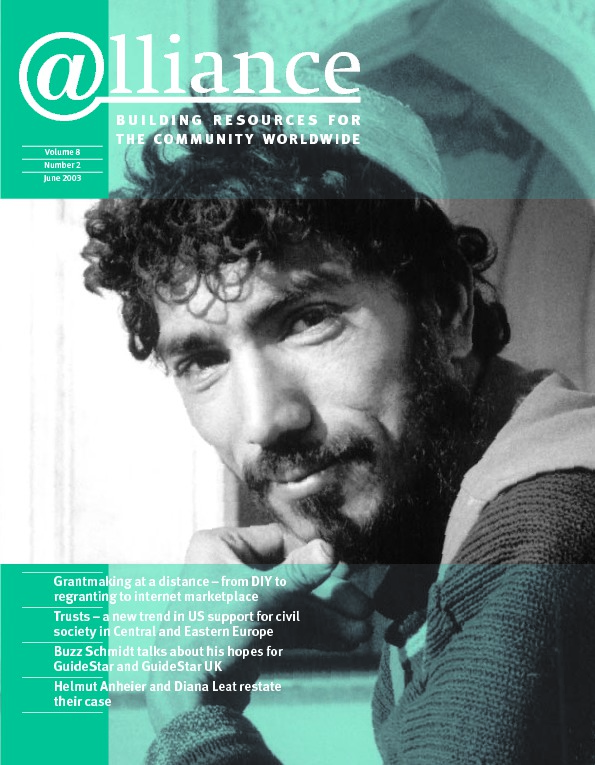150,000 people die each month from malaria, despite the fact that the solutions to stop the disease – long-lasting anti-malarial bed nets, new drug therapies, spraying, and education – are both known and affordable. Clearly, major challenges like malaria – which is itself just a part of one of the eight Millennium Development Goals – are well beyond the capacity of any one actor, or even sector, to address.
But targeted coalitions are making extraordinary progress against specific challenges, and offer both lessons and cause for encouragement in the larger effort to achieve the MDGs. Building these coalitions is a key priority for the UN Foundation.
The Measles Initiative is a prime example of the impact targeted coalitions can have. A consortium of UN, public and private organizations, it has vaccinated 240 million African children and reduced child mortality from the disease by 46 per cent over the past five years (before the campaign, 1 million African children died each year from measles). Along the way, it is also building the capacity for sustainable health delivery and disease surveillance for those most vulnerable: pregnant women and children under five. While measles is far from eliminated, excitement and momentum is building that this effort will help achieve Goal 4, which calls for reducing child mortality by half by 2015.
The fight against malaria, which is also a major factor in achieving Goal 4, is an even larger and more complex challenge. This article focuses on the partnerships that are being developed around just one aspect of the malaria battle – production and distribution of long-lasting anti-malarial bed nets. These partnerships, and the success of the partnership around measles, are evidence that by building targeted coalitions around specific challenges, we can solve the complex problems that comprise the MDGs.
Building coalitions to fight malaria
UN agencies like UNICEF and WHO are playing lead roles in the fight against malaria. To support these efforts, the UN Foundation is helping develop a number of innovative partnerships to overcome four specific problems related to bed nets. These partnerships involve a broad coalition of partners – including African governments, multinational corporations, Japanese and Danish manufacturers, a Senegalese musician, and many, many others. The four problems are:
Finding efficient distribution channels
Large-scale public health efforts like the Global Polio Eradication Initiative and the Measles Initiative have been extremely successful in delivering health services to literally hundreds of millions of people who are also at risk from malaria. These initiatives could also deliver effective and long-lasting anti-malarial nets. The UN Foundation and its partners in both initiatives – including the American Red Cross, the Centers for Disease Control, Rotary International, UNICEF and WHO – are thus exploring how to integrate mass bed net distribution into these existing efforts. In addition, the UN Foundation is working with social entrepreneurs and corporations in Africa to build distribution ventures that can sustain and extend local health delivery networks catalysed by the Global Polio Eradication and Measles Initiatives.
Overcoming market barriers to scale up the production of nets
Although there is a clear need for long-lasting nets, and even financial resources available, that need hasn’t necessarily translated into actual orders. Without a reliable demand and resulting orders for their product, manufacturers have been reluctant to scale up production capacity to make nets in the quantities that are needed. Integrating bed net delivery into existing health delivery efforts like the above initiatives is one major way to create a massive and dependable demand for the nets. Another way to help ‘mature the market’ is by providing net manufacturers with advance purchase guarantee funds. Sumitomo Chemical Company, one of two major manufacturers of long-lasting insecticide-treated nets, recently announced that it will quadruple production of nets by the end of 2005, following such an advance purchase guarantee made by the Japanese International Cooperation Agency.
Breaking bureaucratic bottlenecks to ensure a predictable and sustainable procurement stream
In addition to increasing the availability of bed nets, it’s also important to ensure that the nets already being purchased are being procured as efficiently and cost-effectively as possible. Recently, one government donor set aside funds to be used for the purchase of hundreds of thousands of bed nets for distribution in tandem with a measles immunization campaign, but was not able to provide the funds in time because of bureaucratic obstacles. The delay in available funds led to a delayed order for the nets to be produced, and in turn a missed opportunity to reach millions. Through coordinated lending arrangements, flexible sources of private funds can step forward to provide upfront funding for the purchase of nets, allowing partners to work effectively around the difficulties posed by governmental budgetary cycles. The UN Foundation and its partners are also working with the Global Fund to Fight AIDS, TB and Malaria, the World Bank, the Millennium Project and Roll Back Malaria to create new financing mechanisms that pool funds awarded to countries by the Global Fund for net purchases, to reduce the per unit cost, and to streamline dozens of stand-alone procurement agreements down to a handful.
Building awareness in Africa and around the world
If the people who need the nets aren’t educated about how and why to use them, little will be achieved. One outreach event made possible by the UN Foundation and several partners was the 2005 Africa Live Malaria Concert, which brought together top African performers, including the Grammy-winning Senegalese musician Youssou N’Dour, to bring the message to the people. The concert was broadcast on radio and television throughout Africa, reaching millions. A number of other outreach activities are being undertaken throughout Africa by a broad coalition of partners as a follow-on to the concert, including an autumn concert caravan, through which leading African performers will continue conveying the message of malaria prevention begun with Africa Live.
None of the above could be accomplished by any one partner, and each of these activities needs to be carefully coordinated. That’s why the UN Foundation is working to convene existing and new actors to fight malaria, and to encourage maximum information-sharing and collaboration. For example, the UN Foundation and Canadian International Development Agency recently brought together high-level decision-makers from all sectors, including key multilateral partners (UNICEF, WHO), international organizations (the Global Fund, the International Federation of Red Cross and Red Crescent Societies, the Millennium Project, Roll Back Malaria, and the World Bank), private sector organizations (BASF, Bayer, ExxonMobil, Sumitomo, and Vestergaard Frandsen, another leading net manufacturer), developing countries (Cameroon and Ethiopia), and donor countries (Canada, Denmark, Japan, the UK, and the US) to discuss the full range of challenges to net production and distribution. As a result, several agreements were reached to improve information-sharing, planning and coordination.
Conclusion
As evidenced by just one part of one major global challenge, malaria, the scale and complexity of the Millennium Development Goals defy simple fixes by single actors. Collaboration is not an option; it is a necessity. The UN Foundation’s mission – to strengthen and support the UN and its causes – is also a mandate to be flexible and constantly evolving, just as the challenges and opportunities facing the UN continue to change.
Kathy Bushkin is the Executive Vice President and Chief Operating Officer of the United Nations Foundation. She can be contacted at kathy.bushkin@unfoundation.org
See http://www.unfoundation.org






Comments (0)